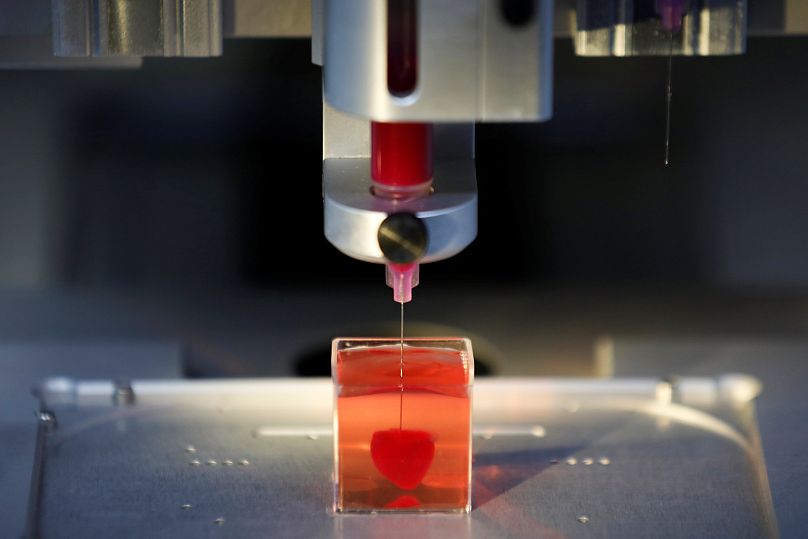Israeli scientists called the 3D print a "major medical breakthrough" that advances possibilities for transplants.
Scientists have hailed a 3D printed heart, complete with human tissue and vessels, as a "major medical breakthrough".
The heart, which is about the size of a rabbit’s, advances the possibilities for transplants according to the researchers.
Developed at Tel Aviv University in Israel, the team behind it say it is a world first.
Tal Dvir, who led the project, said it marked "the first time anyone anywhere has successfully engineered and printed an entire heart replete with cells, blood vessels, ventricles and chambers”.
"People have managed to 3D-print the structure of a heart in the past, but not with cells or with blood vessels," he said.
While it remains a far way off, scientists hope one day to be able to produce hearts suitable for transplant into humans as well as patches to regenerate defective hearts.
The findings were published in the peer-reviewed journal Advanced Science.
Challenges ahead
The cells can contract, but researchers need to teach them to pump. Then they plan to transplant them into animal models, hopefully in about a year, said Dvir.
Another problem is how to expand the cells to have enough tissue to recreate a human-sized heart, he said.
Current 3D printers are also limited by the size of their resolution and another challenge will be figuring out how to print all small blood vessels.
Cardiovascular disease is the world's leading cause of death, according to the World Health Organization, and transplants are currently the only option available for patients in the worst cases.
But the number of donors is limited and many people die while waiting - or patients' bodies sometimes reject the transplant.
The researchers are working to overcome this issue by taking a biopsy of fatty tissue from patients that was used in the development of the "ink" for the 3D print.
First, patient-specific cardiac patches were created followed by the entire heart, the statement said.
Using the patient's own tissue was important to eliminate the risk of an implant provoking an immune response and being rejected, Dvir said.
"The biocompatibility of engineered materials is crucial to eliminating the risk of implant rejection, which jeopardises the success of such treatments," said Dvir.












